
NGC 67 is an elliptical galaxy located in the constellation Andromeda that was discovered on October 7, 1855, by R. J. Mitchell, who described it as "extremely faint, very small, round". The galaxy belongs to the NGC 68 group, which also contains the galaxies NGC 68, NGC 69, NGC 70, NGC 71, NGC 72, and possibly NGC 74.

NGC 68 is a lenticular galaxy, and the central member of the NGC 68 group, in the constellation Andromeda. The galaxy was discovered on September 11, 1784, by William Herschel, who observed the NGC 68 group as a single object and described it as "extremely faint, large, 3 or 4 stars plus nebulosity". As such, his reported location is between NGC 68, NGC 70, and NGC 71. By the time Dreyer looked at the galaxies to add to the NGC catalog, however, he was able to tell that the single galaxy observed by Herschel was in fact 3 adjacent galaxies, and cataloged them as NGC 68, NGC 70, and NGC 71.

NGC 70 is a spiral galaxy located in the constellation Andromeda. It was discovered on October 7, 1855, by R. J. Mitchell and was also observed on December 19, 1897 by Guillaume Bigourdan from France who described it as "extremely faint, very small, round, between 2 faint stars".

NGC 72 is a barred spiral galaxy estimated to be about 320 million light-years away in the constellation of Andromeda. It was discovered by R. J. Mitchell in 1855 and its magnitude is 13.5.
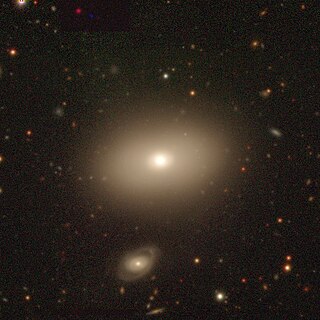
NGC 7302 is a lenticular galaxy located around 124 million light-years away from Earth in the constellation of Aquarius. NGC 7302 was discovered by British astronomer William Herschel on October 3, 1785 and was rediscovered by American astronomer Lewis Swift on August 8, 1896 and was listed in the IC catalogue as IC 5228. It is also part of a group of interacting galaxies.

NGC 7012 is a large, bright elliptical galaxy located about 380 million light-years away from Earth in the constellation Microscopium. NGC 7012 was discovered by astronomer John Herschel on July 1, 1834. NGC 7012 is also is host to a supermassive black hole with an estimated mass of 4.5 × 109M☉. NGC 7012 is very large galaxy, with an estimated diameter of nearly 300,000 light years.
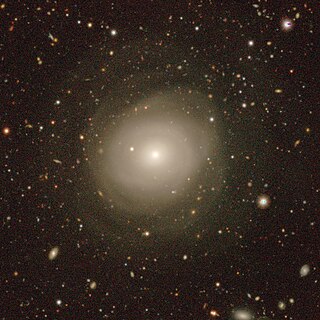
NGC 466 is a lenticular galaxy located about 227 million light-years away from Earth in the constellation Tucana. NGC 466 was discovered by astronomer John Herschel on October 3, 1836.
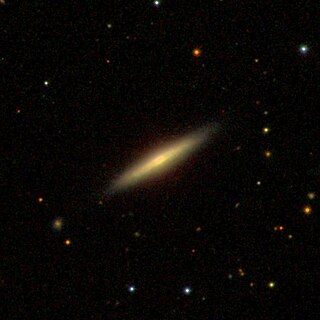
NGC 489 is probably an edge-on spiral galaxy located about 97 million Light-years away from Earth in the constellation Pisces. NGC 489's calculated velocity is 2507 km/s. NGC 489 was discovered by German astronomer Heinrich Louis d'Arrest on December 22, 1862.

NGC 7051 is a barred spiral galaxy located about 100 million light-years away in the constellation of Aquarius. It was discovered by astronomer John Herschel on July 30, 1827.
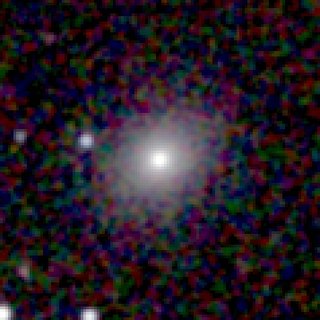
NGC 7057 is an elliptical galaxy located about 230 million light-years away in the constellation of Microscopium. NGC 7057 was discovered by astronomer John Herschel on September 2, 1836.
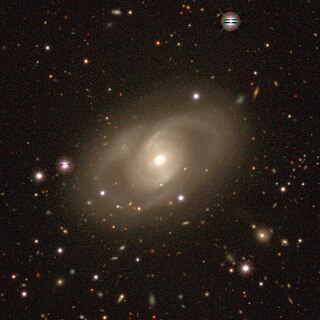
NGC 7060 is an intermediate spiral galaxy located about 200 million light-years away in the constellation of Microscopium. The spiral arms of NGC 7060 appear to overlap. NGC 7060 was discovered by astronomer John Herschel on September 2, 1836.
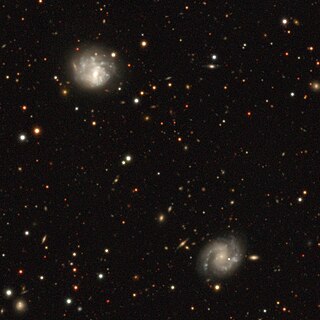
NGC 7072 is a spiral galaxy located about 210 million light-years away in the constellation of Grus. NGC 7072 was discovered by astronomer John Herschel on September 5, 1834.
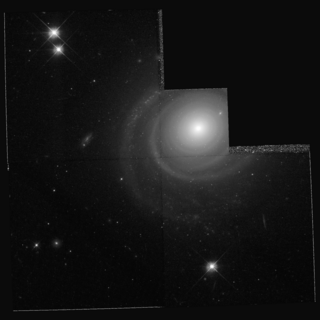
NGC 7096 is a grand-design spiral galaxy located about 130 million light-years away in the constellation of Indus. NGC 7096 is also part of a group of galaxies that contains the galaxy NGC 7083. NGC 7096 was discovered by astronomer John Herschel on August 31, 1836.

NGC 4473 is an elliptical galaxy located about 50 million light-years away in the constellation of Coma Berenices. It was discovered by astronomer William Herschel on April 8, 1784. NGC 4473 has an inclination of about 71°. NGC 4473 is a member of a chain of galaxies called Markarian's Chain which is part of the larger Virgo Cluster of galaxies.
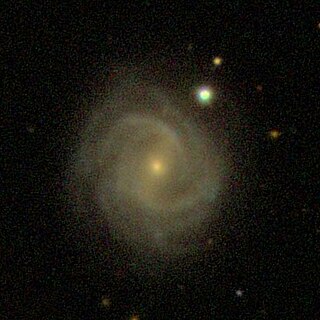
NGC 2503 is an isolated spiral galaxy approximately 254 million light-years away in the constellation Cancer. The galaxy was discovered on February 17, 1865 by astronomer Albert Marth.
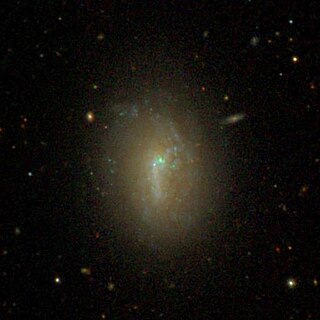
NGC 4630 is an irregular galaxy located about 54 million light-years away in the constellation of Virgo. NGC 4630 was discovered by astronomer William Herschel on February 2, 1786. NGC 4630 is part of the Virgo II Groups which form a southern extension of the Virgo Cluster.

NGC 4633 is a spiral galaxy located about 70 million light-years away in the constellation of Coma Berenices. It is interacting with the nearby galaxy NGC 4634. NGC 4633 was discovered by astronomer Edward D. Swift on April 27, 1887. It was rediscovered on November 23, 1900, by astronomer Arnold Schwassmann and was later listed as IC 3688. NGC 4633 is a member of the Virgo Cluster.

NGC 4479 is a barred lenticular galaxy located about 60 million light-years away in the constellation of Coma Berenices. NGC 4479 was discovered by astronomer William Herschel on April 8, 1784. It is a member of the Virgo Cluster.
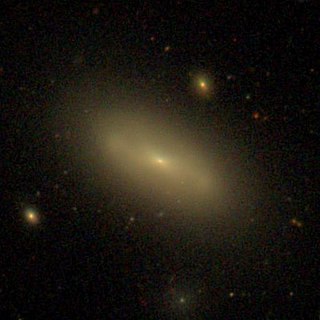
NGC 4497 is a lenticular galaxy located about 60 million light-years away in the constellation Virgo. NGC 4497 was discovered by astronomer William Herschel on March 15, 1784. It was rediscovered by astronomer Arnold Schwassmann on November 8, 1900 and was listed as IC 3452. NGC 4497 is a member of the Virgo Cluster.

NGC 4503 is a barred lenticular galaxy located around 41 to 74 million light-years away in the constellation Virgo. NGC 4503 was discovered by astronomer William Herschel on March 15, 1784. NGC 4503 is a member of the Virgo Cluster.

















